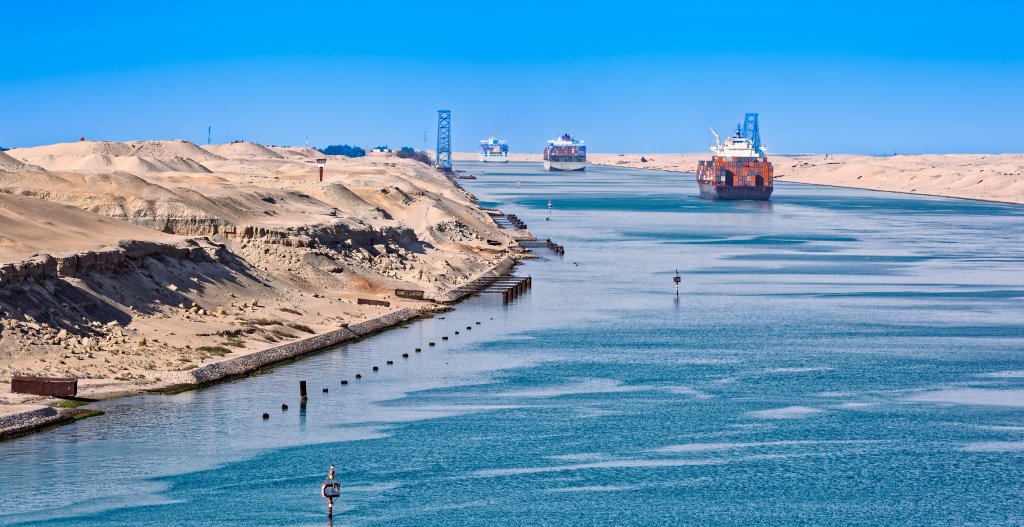The Suez Canal first opened for navigation on 17th November 1869 with a depth of around only 8 meters, allowing ships with a maximum draft of 22 feet to transit.
The Canal however, has been expanding in order to accommodate the ever increasing vessel sizes including the ultra-large ships. Just recently the Suez Canal Authority (SCA) completed its expansion project opening a new waterway alongside the original Canal, which has increased capacity and eased congestion. According to the SCA’s website, the Canal can now accommodate 61.2%, 92.7% and 100% of the world’s tankers, bulk carriers and containerships fleets, respectively. On 5th September 2017, the SCA announced that the newly-expanded canal set a new record of passage and tonnage crossings, recording a total of 157 ships. Amongst the biggest vessels transiting the Canal recently were the world’s third and second largest containerships: “MOL TRIUMPH” and “MADRID MAERSK”. It takes between 12 and 16 hours for ships to transit the Canal, and approximately 76 ships transit the canal on a daily basis.
Reduction of traffic dues of up to 50%
In conjunction with the addition of the new waterway the SCA announced tariff levels based on the number of containers loaded. The reductions offered to containerships that cross the Canal vary from 3% up to 50%. Vessels carrying more than 200 containers are granted a 3% reduction, vessels carrying 500 containers a 7.5% reduction and so forth reaching a 50% reduction for vessels carrying 3000 to 5000 containers. In addition to this from October 2017, container and passenger ships coming from foreign ports destined for ports within the Suez Economic region will benefit from further reductions in port, berthing and pilotage dues.
The Authority has also recently formed a joint venture with DP World to develop projects in the Suez Canal Economic Zone, a promising venue owing to the canal’s strategic location. The prominence of the artificial Suez Canal connecting the Mediterranean Sea with the Red Sea has advanced trade-ties between Southeast Asia, Europe and US East Coast, permitting ships to bridge over Africa, instead of navigating around it, eliminating about 4,350 nautical miles of sea passage, making it the world’s fastest maritime corridor. This, together with the lower tariffs on ships transiting the canal, has encouraged investment in Egyptian ports and enhanced trade.
The Suez Canal has expanded and modernised to cater for the new larger ships and has clearly benefited, and will continue to benefit, from such development.

